#1936 Summer Olympics
Text
Alex Abad-Santos at Vox:
Despite being a time when people from all over the world come together in equality and peace, the Olympics are still uncertain territory for transgender athletes. There are no transgender athletes who are competing outside of the gender they were assigned at birth at this year’s Games. Transgender women who transitioned after puberty aren’t allowed to compete in major sports on a college level.
Athletes Nikki Hiltz, a runner, and Hergie Bacyadan, a boxer, both identify as transgender (Hiltz also identifies as nonbinary), but both have always and continue to compete in the women’s division, which is the sex they were assigned at birth.
Athletes who do not identify as trans, like Algerian boxer Imane Khelif, have also been scrutinized for their gender. Along with China’s Lin Yu-ting, Khelif is one of two women boxers who failed a “sex test” from the International Boxing Association last year.
They have since been connected to discussions of sports and Differences of Sexual Development (DSD), a rare group of genetic and hormonal disorders allowed under International Olympic Committee guidelines. After Khelif’s Italian competitor Angela Carini conceded their match less than a minute into their bout, many have weighed in, including Elon Musk and J.K. Rowling.
Outside of the Games, trans people face so much backlash, often for simply existing. The conversation around sports is particularly fraught, from children’s athletics right up through the pros. Despite the International Olympic Committee vowing to be more inclusive, the future for trans athletes is unclear.
It all raises the question: How did we get to this point, and did it always have to be this way?
The answers found in historian and journalist Michael Waters’s The Other Olympians: Fascism, Queerness, and the Making of Modern Sports might be surprising. Waters’s book traces the emergence of Zdeněk Koubek, a track and field star representing the country formerly known as Czechoslovakia who, at 21, won two medals — a gold in the 800m and a bronze in the long jump — at the 1934 Women’s World Games. (The Women’s World Games was the precursor to women competing at the Olympics). In 1935, Koubek announced that he would be living life as a man and swiftly became an international celebrity.
Perhaps the most intriguing facet to Koubek’s story was in the public response. Koubek was more welcomed and celebrated than we might imagine. There was an open-mindedness and empathy to the reception of Koubek and his gender identity and expression in the 1930s.
Waters also pinpoints where and when that changed, specifically at the 1936 Olympics in Nazi Germany. Armed with a propensity for eugenics, gender anxiety, and a startling lack of scientific evidence, a small set of Nazi officials influenced the International Olympic Committee into gender surveillance and trans panic — stuff that eerily mirrors the transphobic attacks that athletes, cis and trans alike, face today.
Anti-trans discrimination in the Olympics stretches as far back as the infamous 1936 games in Berlin.
#Olympics#Transgender#Transvestigations#LGBTQ+#Lin Yu Ting#Imane Khelif#Hergie Bacyadan#Nikki Hiltz#Zdeněk Koubek#1936 Berlin Olympics#1936 Summer Olympics
62 notes
·
View notes
Text

German spas. Where nature cures. Vintage travel poster - circa 1935.
#vintage illustration#vintage posters#posters#the 30s#the 1930s#art deco#deco design#germany#german posters#german spa towns#german spas#vintage travel posters#travel posters#1936 summer olympics
11 notes
·
View notes
Text
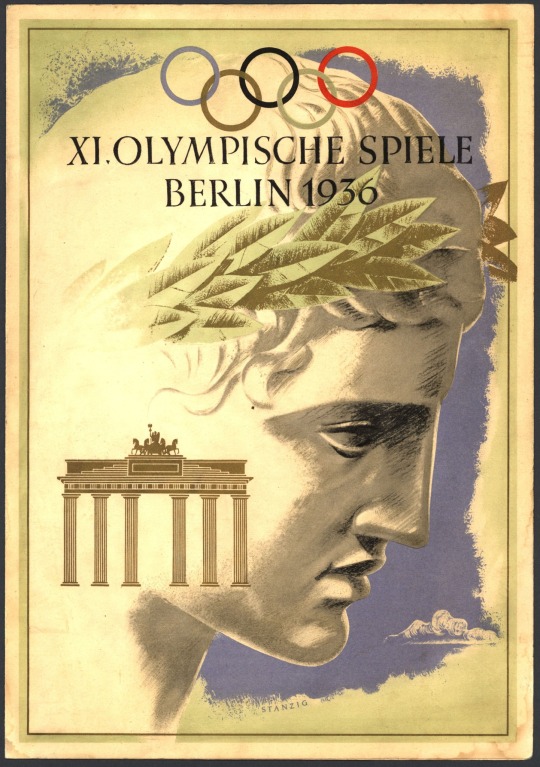
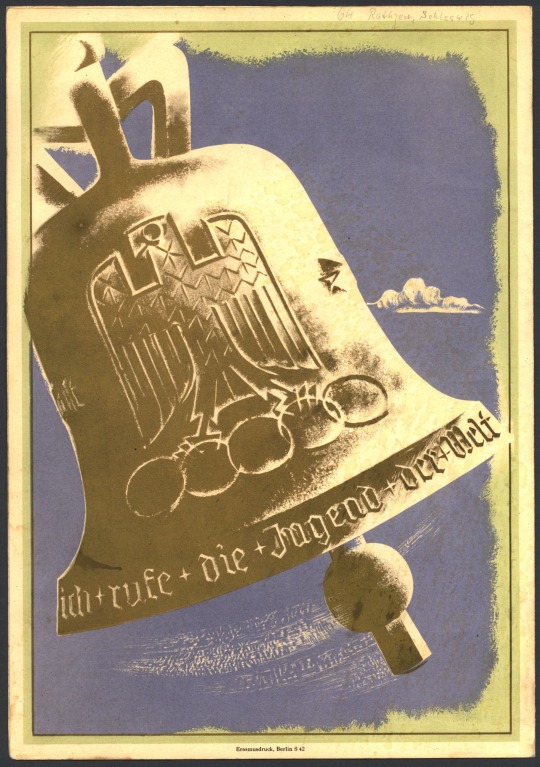
XI. Olympische Spiele Berlin 1936 | XI Olympic Games Berlin 1936
Ich rufe die Jugend der Welt! I Call the Youth of the World!
#olympics#berlin#germany#1936 summer olympics#1936 olympics#olympic games#german#europe#european#olympiad#olympiade#olympische spiele#olympia#olympians#leni riefenstahl#history#sports#athletes#athletics#olympische sommerspiele 1936#xi olympiad#xi olympiade#summer olympics#summer olympic games#laurel wreath
117 notes
·
View notes
Text
Boys in a Boat: Movie Review
When I read Daniel James Brown’s acclaimed book “Boys in a Boat”, I fell in love with rowing. When I saw the movie by the same name, I fell in love with Callum Turner who gives a thoughtful, heartrending performance as Joe Rantz. Many interesting details from the book are missing in the movie but it is just as inspirational and elegant. Drawing on the true events from newspaper articles, photos,…
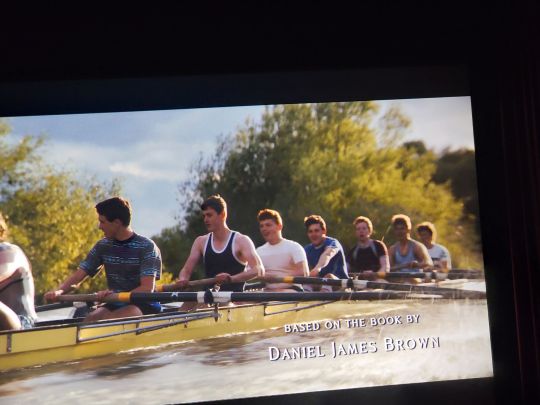
View On WordPress
#Berlin#Boys in a Boat#Callum Turner#Coach Ulbrickson#Courtney Henggeler#Daniel James Brown#Hazel#in Hitler#Joe Rantz. George Clooney#Joel Edgerton#Mark Smith. Joe Rantz#movie#Summer Olympics of 1936#University of Washington
2 notes
·
View notes
Text
Jesse Owens: A Legacy of Courage, Athletic Triumph & Who Single-handedly Crushed Hitler's Myth of Aryan Supremacy
James Cleveland “Jesse” Owens (September 12, 1913–March 31, 1980) was an American track and field athlete who won four gold medals in the 1936 Olympics.
Owens was known as “perhaps the greatest and most famous athlete in track and field history” during his career. He specialised in sprints and long jumps. At the 1935 Big Ten track meet at Ann Arbour, Michigan, he set three world records and tied…

View On WordPress
#1936 Summer Olympics in Berlin#1936 Summer Olympics in Nazi Germany#African American history#African-American#Black American#Black American Historical figures#Black American History#James Cleveland "Jesse" Owens#Jesse Owens#Nazi Germany
0 notes
Text
The survival story of Ben Bril.
It’s hard to believe that the only time an Olympic games was held in the Netherlands, is nearly 100 years ago, the 1928 Amsterdam Olympics. One of the competing Dutch athletes was Ben Bril.
Ben (Barend) Bril was born on July 16, 1912 in Amsterdam, the host city for the 1928 Summer Olympics. He was one of seven children to Jewish parents Klaartie Moffie and Abraham Bril, who worked as a…

View On WordPress
#1928 Summer Olympics#1932 Olympic Games#1936 Olympic Games#Bergen Belsen#George Foreman#History#Holocaust#Irish Boxing#Joe Frazier#Maccabi Games#Olympic Games#Sugar Ray Leonard#the Netherlands#World War 2
0 notes
Text

On this date in 1936, Jesse Owens salutes during the presentation of his gold medal for the long jump, after defeating Germany’s Lutz Long during the Summer Olympics in Berlin. http://dlvr.it/TBXbmc
19 notes
·
View notes
Text
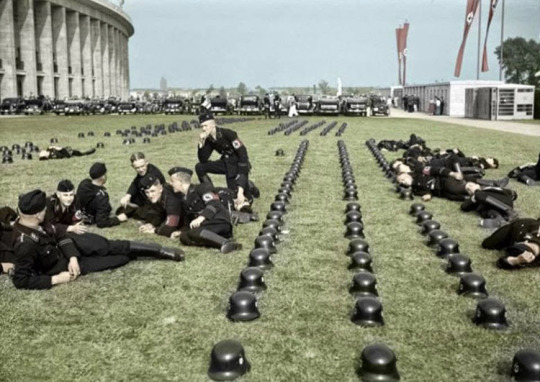
German soldiers during a break at the 1936 summer Olympics.
#historical#historical photos#history#history photos#1940s#1940s photos#vintage#second world war#vintage photography#vintage photos#world war 2#world war ii#1930s#1930s photography#1936 olympics
30 notes
·
View notes
Photo

Ziuta Buczyńska, dancer. Situational photograph taken in the atelier (in the dance "Robotnica", which she performed at the 1936 Summer Olympics in Berlin), 1936.
226 notes
·
View notes
Text

Gunhild Maria Larking (born 13 January 1936) is a retired Swedish high jumper.
She competed at the 1952 Summer Olympics, 1954 European Athletics Championships and 1956 Summer Olympics and placed ninth in 1952 and fourth in 1954 and 1956. She won five consecutive national titles from 1952 to 1956.
#art#beauty#photography#vintage#black and white#60s style#the paradigm web#painting#abstraction#nude figure
22 notes
·
View notes
Text
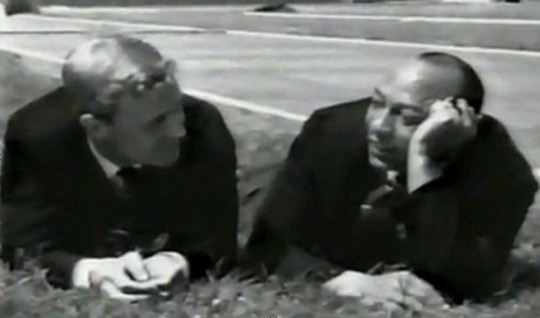

TODAY’S FROZEN MOMENTS - 80 Years Ago Today - July 14th, 1943, German former athlete and then soldier Luz Long was killed in battle. But just before his death, knowing it would be his last gesture, he wrote a letter to his close friend asking a last favor of him. His friend was American track star Jesse Owens.
Luz Long had been the German long jump champion six times - in 1933, 1034, 1936, 1937, 1938, and 1939. He was arguably the best long jumper in the world - that is until he went to the 1936 Summer Olympics in Berlin, and had to settle for the silver medal in his event, the gold going famously to American Jess Owens.
But, Luz Long’s greater legacy might be his friendship with Owens, which happened during those Olympic Games on 1936, when Long befriending Owens was a dangerous brave act to do under the nose of Adolf Hitler. As Owens remembers, "It took a lot of courage for him to befriend me in front of Hitler.… You can melt down all the medals and cups I have and they wouldn’t be a plating on the 24-karat friendship I felt for Luz Long at that moment. Hitler must have gone crazy watching us embrace…”
In this last letter Long wrote to his friend Jesse, he said, “I am here, Jesse, where it seems there is only the dry sand and the wet blood. I do not fear so much for myself, my friend Jesse, I fear for my woman who is home, and my young son Karl, who has never really known his father. My heart tells me, if I be honest with you, that this is the last letter I shall ever write. If it is so, I ask you something. It is a something so very important to me. It is you go to Germany when this war done, someday find my Karl, and tell him about his father. Tell him, Jesse, what times were like when we not separated by war. I am saying—tell him how things can be between men on this earth. Your brother, Luz’”
After writing and posting this letter, Long was killed in action, 80 years ago today.
Jesse Owens did indeed travel to Germany after the war and delivered this story and message and gratitude and admiration to Luz Long’s song Karl., fulfilling his friend’s dying request.
These two shots are of Owens with Luz, and then later with Karl.
[h/t and thank you to Mary Elaine LeBey]
106 notes
·
View notes
Photo

Handy Guide-Map Through Berlin. Issued for the Games of the XI Olympiad - 1936 Summer Olympics.
3 notes
·
View notes
Text

One of the advertisements created for the XI Summer Olympic Games, which were held in Berlin, Germany, in 1936.
Source: US Holocaust Memorial Museum
I DON'T SUPPORT NAZISM,FASCISM OR ZIONISM IN ANY WAY, THIS IS AN EDUCATIONAL POST
18 notes
·
View notes
Text


Louis Zamperini, 1936 U.S. Olympic Team: "We're all standing on the infield, the grass, all lined up military style. They released 25,000 pigeons, they said. The sky was clouded with pigeons. And the pigeons circled overhead and then they shot a cannon and they scared the poop out of the pigeons. And we had straw hats, flat straw hats. You could hear the pitter patter on our hats."
George Eyser was a German-American gymnast who competed in the 1904 Summer Olympics, earning six medals in one day, including three gold and two silver medals. Eyser competed with a wooden prosthesis for a left leg, having lost his real leg after being run over by a train.
6 notes
·
View notes
Text

Day 14 of 365 Days of Black History...
DID YOU KNOW?
Jesse Owens became the first American to win four gold medals in track and field.
Jesse Owens on Hilter/Berlin Olympics
"Hitler didn't snub me; it was our president [FDR] who snubbed me. The president didn’t even send a telegram." — Jesse Owens after winning FOUR GOLD medals in the 1936 Olympics in Berlin, Germany. FDR invited each white US olympian to the White House, but not Jesse. #BHM2021 ❤🖤💚
photo: Jesse Owens in the center after winning the long jump at the 1936 Summer Olympics (with, from left: Naoto Tajima and Lutz Long).
13 notes
·
View notes
Text
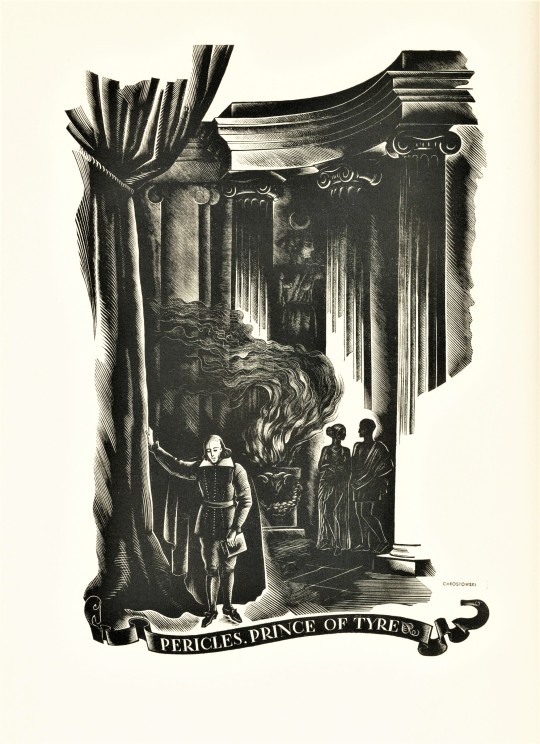




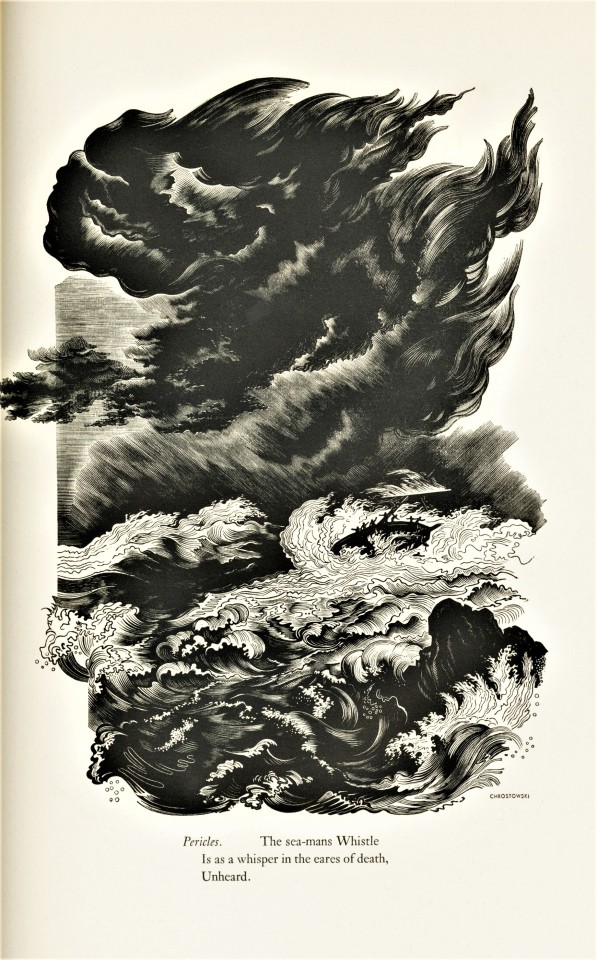

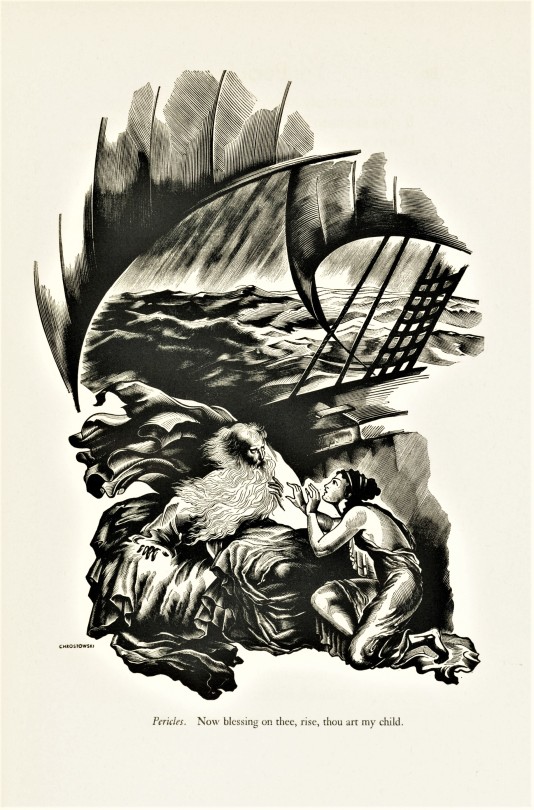
Shakespeare Weekend!
This weekend we explore Shakespeare’s romantic drama, Pericles, Prince of Tyre, the twenty-eighth volume of the thirty-seven volume The Comedies Histories & Tragedies of William Shakespeare, published by the Limited Editions Club (LEC) from 1939-1940. It is widely acknowledged that Shakespeare was likely not the sole author of Pericles, Prince of Tyre and while it was published in quarto in 1609 by stationer Henry Gosson with Shakespeare’s name on the title page, it was not included in his works until the Third Folio of 1663. Most scholars believe that Pericles, Prince of Tyre was written in 1607 or early 1608 and co-authored by pamphleteer George Wilkins.
This edition of Pericles, Prince of Tyre was illustrated with wood-engravings by Polish artist Stanislas Ostoja-Chrostowski (1900-1947). Chrostowski studied at the Warsaw Academy of Fine Arts, received a bronze medal in the 1936 Summer Olympics Art Competition for commercial graphic art painting, and was active in the intelligence department of the World War II Polish resistance movement Home Army. He was regarded as the leading wood-engraver of his nation and was known for illustrating several Polish classics and numerous children’s books. The LEC writes of Chrostowski’s work that “whole textures are created by his tools, and the resulting prints seem to have more color than just the color of black ink.” Indeed, his precise and vivid engravings storm off the page to match the dramatic tenor of the play.
The volume was printed in an edition of 1950 copies at the Press of A. Colish. Each of the LEC volumes of Shakespeare’s works are illustrated by a different artist, but the unifying factor is that all volumes were designed by famed book and type designer Bruce Rogers and edited by the British theatre professional and Shakespeare specialist Herbert Farjeon. Our copy is number 1113, the number for long-standing LEC member Austin Fredric Lutter of Waukesha, Wisconsin.

View more Limited Edition Club posts.
View more Shakespeare Weekend posts.
View more posts with wood engravings!
-Jenna, Special Collections Graduate Intern
#Shakespeare Weekend#William Shakespeare#Pericles Prince of Tyre#Stanislas Ostoja Chrostowski#LEC#Limited Editions Club#Press of A. Colish#Bruce Rogers#Herbert Farjeon#Wood Engraving#wood engravers#severed heads
28 notes
·
View notes